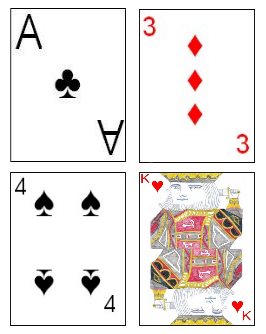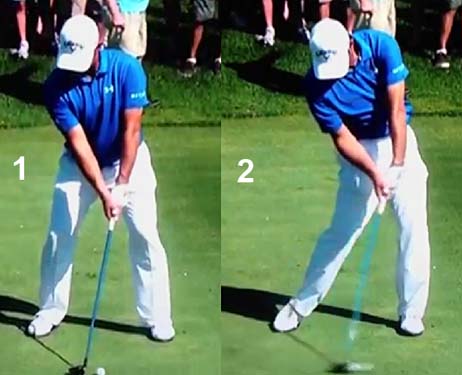
One way to improve your chances of breaking 80 in golf is to practice more and from the short tees. This will help build confidence as well as mental toughness. It is important to play golf at different hours of the day in order to improve your swing. You can also practice your putting. However, this may not be easy because there are several aspects that can affect your score. You should have a positive mental attitude to be able shoot lower scores when necessary.
Drills to improve bunker play
The most common mistake players make when hitting a bunker shot, is to not accelerate through impact. Players end up with the ball being less that a foot away from the bunker and have to do a lot of follow-through. To achieve this goal, practice hitting a practice hit with your left foot. You should keep your right foot flat on the sand.
Amateur golfers are known to miss the ball too much behind the ball. Either they hit the ball too close to the ball, or too far back. The ball will stay in the sand. Or, they hit it too short, which can cause the ball to fly off the green. This is a mistake that can be avoided. Make sure you hit the ball exactly behind the ball and leave enough sand.

Mental game
One way to improve your mental game and break the 80-mark in golf is to trust your instinct. Although skills are important in golf, intuition is just as important. Trust the right side and let it manage your left. Instead of worrying over technical issues, think about what you can do well. By changing your thought patterns and reorganizing the power of your mind, you can increase your chances of breaking 80 in golf.
Practice focusing on missing the green and not worrying about whether you hit it in both directions. You might find it easier to make up for it if the shot went in one direction. Negative mental states can make it more difficult to reach 80. Keep in mind that golf should be fun. If you want to break 80 in golf, don't let the quest to break 80 get in your way of enjoying the game.
Putting practice
One of the key aspects of improving your game in golf is putting practice. It is crucial to make important decisions throughout a round. By practicing, you can anticipate these problems and know how to solve them before they arise. Also, practicing your short game and putting will decrease the chances of you getting stumped on the course. It is a great way for you to improve your short-game and putting skills.
It doesn't necessarily have to take too long to get a good warm-up. You can spend just ten seconds on the putting course before you go. Before you hit your first swing, your muscles must be activated and relaxed. Also, you will get a feel of the speed on the green by spending time at the putting green. If you're a golfer who is about to break 80, it's crucial to spend a few minutes on the green.

Management of emotions
It is crucial to be able to control your emotions while playing the game of golf. Research has shown that emotion intelligence has a positive effect on performance in a number of areas. Golf is no exception. You can learn emotional intelligence. This article will explain how to use emotional intelligence to improve your playing. Read on to discover how to manage your emotions while playing golf. To maximize your enjoyment and your results, it is important to manage your emotions while playing golf.
Setting a purpose for your golf play is an important aspect of self management. Managing your emotions allows you to focus on a specific goal and set the correct direction. To do this, you need to develop a disciplined plan and avoid rushing your thought process. Also, you need to be aware and alert for any physiological conditions that could affect your performance such as hypoglycemia or chronic fatigue.
FAQ
How do I learn golf?
Learning to play golf requires practice and patience. But, you can improve your game. Here are some tips for you to improve your game.
-
Regular practice is important. Golf requires constant concentration and attention. You will not improve your skill level if you don't practice enough.
-
Play with people who can play. Playing with others can help you develop your own style.
-
Read about golf before you begin practicing. This will give an overview of your needs.
-
Do not try to master all aspects of your game at once. You can start by focusing on one area of your game. Try focusing on one area of your game. For example, you might try to improve your putting or learn how to chip. Move on to the next area of your game when you feel confident.
-
Take lessons. Take lessons to learn how to position yourself, swing speed, posture, and many other important aspects.
-
Try new techniques. Experiment with different grips, stances, swings, and so on.
-
Keep records. Record your scores and keep track of your progress. This will help you to see the areas you need to improve.
-
Join a local club. There are many clubs around that offer free lessons. Clubs often have welcoming members who are eager to help newcomers.
-
Locate a coach. You can get guidance from a professional coach on certain areas of your game.
What is a Par?
Par is the number of strokes required to complete a hole. Each player's score is added up to calculate the total score.
Each round of golf has 18 holes. Each hole is assigned a rating. The hole with the highest rating is "par 3". It is three strokes from the hole. The "par 5" hole is the lowest rated. It is five strokes away.
How often should I play golf?
It depends on your availability of time. Most recommend two practice sessions per week.
Four times a week is the ideal number to be an expert golfer.
How is golf played?
Golf is played on an 18-hole golf course that follows a set of rules known as the Rules of Golf.
The first stroke begins from behind the designated teeing areas. Players play turns hitting balls into holes at different distances on the course. Each hole has a different number of strokes, depending on how far it is from the teeing area.
There are three main types used in golf:
-
In a drive shot, players use clubs to hit the ball as far as possible. This shot is considered to be the most important.
-
An approach shot requires that players hit the ball within the specified area of the hole.
-
A putt in which players attempt to sink the ball down into the cup through rolling it along with the ground.
A player must complete each hole without missing any of his/her own putts. A player who fails to complete each hole by sinking all his/her own putts loses one stroke.
Some players may prefer to play with their caddy or partner. They will hold and carry the club during each round. While the caddie is not usually involved in the decision making process, they can provide advice on strategy and etiquette.
Can I learn how golf is played?
Yes. There are several schools where you can enroll to learn how to play golf. You will need new equipment, such as a set or clubs.
What equipment should you bring to play golf?
Golfers need to wear clothing suitable for the weather conditions. Players should wear long pants, a shirt with sleeves and good grip shoes. Sunscreen and sunglasses are recommended for outdoor play.
To help you wipe sweat from your face and body after working out, it's a good idea for you to bring a towel. Also, remember to bring a hat and gloves, a water bottle, and snacks like fruit and sandwiches.
Statistics
- In the United States, women made up 25 percent of golfers in 2021, which was up from 19 percent in 2011, and junior female golfers account for 35 percent or 1.1 million golfers.[50] (en.wikipedia.org)
- They do this by means of assessing and rating courses according to the average good score of a "bogey golfer," a player with a handicap of around 20. (en.wikipedia.org)
- He shanked the first attempt, but it is estimated his second went more than 200 yards (180 m).[52]Golf courses worldwide. Below are the top 20 countries with the most golf courses as of 2019.[53]CountryNumber of (en.wikipedia.org)
- Professional golfers typically make between 60% and 70% of greens in regulation. (en.wikipedia.org)
External Links
How To
The Best Way to Improve Your Putting Skills
Golf has been played for hundreds of years. It was first played in ancient Egypt, then spread throughout Europe and Asia, and later to America. Golf is a sport which requires many skills like strength, agility flexibility coordination eye-hand coordination and concentration.
For you to be a good player, you need to have mental preparedness and physical fitness. Also, you should learn to swing correctly and hit it with accuracy. This will enable you to have a good sense for timing and balance when hitting the ball.
There are many ways you can improve your putting. The first is to practice consistently, especially before participating in a tournament. Another way is to use a tool called the "puttertrainer". You can train your muscles to straighten and bend down, while also improving your posture. It improves muscle control and eyesight.
The grip pressure also plays a role in your ability to hit the ball. Your hands will quickly tire if you grip the club too tight. However, if the club is held too tightly, your hands will tire quickly. Depending on the shot, your grip pressure should be different. You should apply more force to your club head if you are short of the hole. However, you will need to use less force if you are long.
Also, try to relax your wrists. This will allow you to move your arms and shoulders more freely during strokes. Smooth wrist movement should be fluid. You can learn more about putting by watching videos online and reading books. For tips, ask other players.